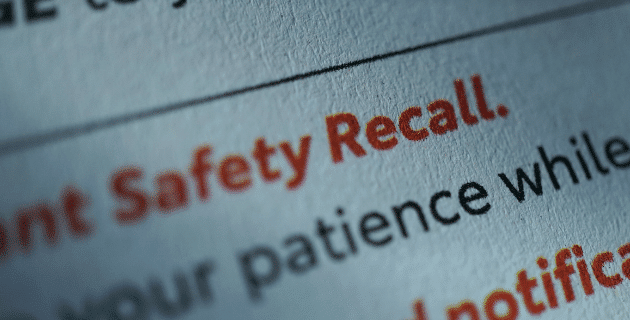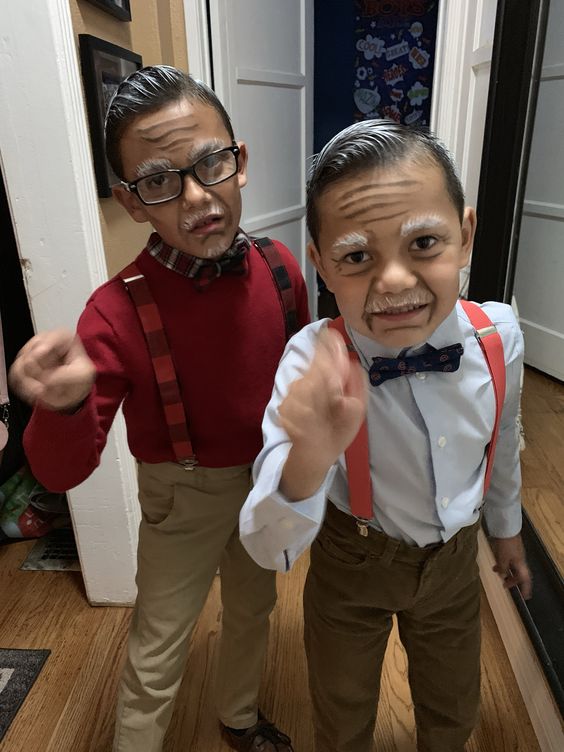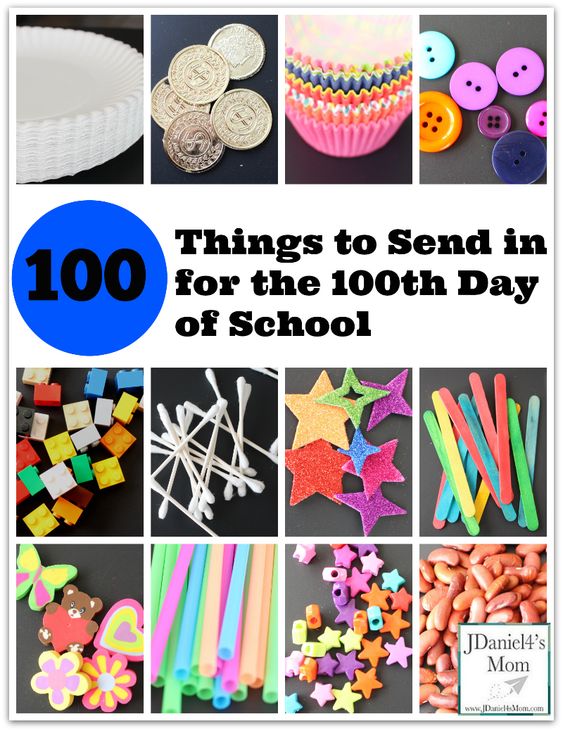
by California Casualty | Travel |
Looking forward to relaxing on a warm beach, hitting the slopes on a scenic mountain, or choosing day trips for a stress-free staycation this Spring Break?
Check out our timesaving guide for planning your next vacation or staycation.
Set your budget.
Where can you go and what can you do? It depends on your budget. A travel budget is not an ironclad number; it’s more of an estimate. Think of a figure that you’d be willing to spend on a vacation or a staycation. Then determine if that amount covers the major expenses of your trip: accommodations and travel expenses.
-
- Research travel deals and airfare specials.
- Check out the rates of less popular airports near your destination to save money.
- Rent a car instead of flying.
- Check out different lodging options.
Choose your destination.
What’s your vacation style? Maybe you like touring museums and cultural attractions or you prefer lounging by the pool. You might like being active, such as skiing, hiking, or bicycling. The types of vacation that you most enjoy will help determine your destination. Match that to the budget and you’ll be able to choose a great destination.
-
- Take advantage of discounts, such as credit card points, AAA, or military.
- Check out additional discounts on Groupon, Kayak, Priceline, booking.com, and other services.
- Book your airfare and/or reserve your rental car.
- Create a draft travel itinerary. Buy tickets for popular activities so you won’t arrive and find them sold out.
Select your accommodations.
You may not be spending a lot of time in your room, but you do want a central location that allows you to do what you want to do. In some cases, like on a staycation, your lodging may be your entire vacation because it provides everything you need.
-
- Determine the amenities that are important to you. Do you want a kitchen where you can cook meals? A beachside location? A place that’s walking distance to everywhere you want to be? On-site entertainment? All-inclusive services?
- You can stay in a hotel, a cabin, a treehouse, a resort, a bed-and-breakfast, on a cruise ship, or any of a number of options. Choose the right lodging for your vacation style and your budget.
- Do you have friends or family that you’d like to visit? Consider staying with them and incorporating them into your vacation plans for all or part of spring break. Alternatively, see if they’d like to swap houses with you for the week.
Purchase insurance just in case.
Accidents happen and plans change. That’s where travel and rental insurance come in. Travel insurance can reimburse you if you are unable to go on your trip. Rental car insurance can help in the event of a collision or other damage to your rental car.
-
- Before you purchase rental car insurance, make sure your auto policy doesn’t already cover rental cars. Many policies do.
- If you’re renting a car out of the country, double-check that your auto policy covers you. For example, when traveling in Mexico, you will need a special Mexico policy.
- Travel insurance comes in many varieties. You can get trip cancellation, trip interruption, or trip delay insurance. You also can get baggage loss coverage. Talk to your insurance provider about what is available to you.
- You also can get medical expenses and medical evacuation coverage. This is important for trips outside the country. Once again, speak to your insurance provider to make sure you qualify for the coverage.
For the foreseeable future, you will want to take precautions to guard against COVID-19. After all, it’s no fun to be sick on vacation; neither is it a good idea to bring a virus back to your students. When traveling, follow these guidelines.
-
- Some destinations require COVID tests. Know the rules and regulations so that you can schedule your test before your trip or at the airport.
- Wear your mask at the airport and on the plane.
- Wash your hands frequently.
- Avoid crowds where possible, and stay 6 feet away from others.
Plan a staycation.
A staycation can be as much fun as a vacation with the advantage of being a lot more affordable. While you can certainly use the time for projects around the house, you can enjoy a real break by planning day trips and fun activities.
-
- You don’t technically have to stay home during a staycation. Consider one or two nights at a local hotel or other fun lodging.
- Choose a theme for your staycation, such as gourmet traveler, spa serenity, or tourist in your own town. Use it to inspire your activities.
- Enjoy fun takeout or restaurant meals that make the week feel special.
- Disconnect from social media and the news. Enjoy movie nights, game nights, and other interactive fun.
- Don’t forget that Educators & ESPs can win a $10,000 Staycation Giveaway from California Casualty!
What are your plans this Spring Break? Share it with your colleagues in the comments.
This article is furnished by California Casualty, providing auto and home insurance to educators, law enforcement officers, firefighters, and nurses. Get a quote at 1.866.704.8614 or www.calcas.com

by California Casualty | Auto Insurance Info |
We want our cars to be safe and reliable, yet sometimes, parts malfunction. When it’s a defect that creates a safety risk, the automaker is responsible for fixing it. That’s when you get an auto recall notice. These notices inform car owners that something needs to be adjusted or replaced to make their vehicles safe to drive.
How common are recalls?
Recalls happen all the time. In 2020, there were nearly 900 safety recalls affecting 55+ million cars and equipment, according to the National Highway Traffic Safety Administration (NHTSA), the government agency responsible for exploring safety complaints. NHTSA looks at safety issues, both large and small. If the car doesn’t meet the minimum safety standard, automakers are required to announce a recall. The recall is usually for a specific make and model. The vehicle manufacturer is legally obligated to inform buyers and cover the costs of repairs. Even so, only about 75% of vehicles recalled in a given year are ever fixed, according to NHTSA.
Note: There is a time limit on recalls, usually 8 years. A repair after that timeframe usually means you have to cover the cost.
Why might my car be recalled?
Recalls affect parts of the car that could cause an immediate safety hazard. They could be small or large, and include airbags, tires, brakes, engines, and electrical components. They would not, however, include air conditioners, radios, or ordinary wear and tear. One recall that occurred this past year was for the seat belt in a Ford Motor F-150 Super Cab. The belt was installed incorrectly and as a result, didn’t provide enough restraint in the event of a crash. Takata airbags again surfaced this year as NHTSA looked at 20+ automakers who used the potentially explosive bags. Other 2021 recalls were for brake issues, hood problems, battery fire hazards, and diesel engine stalling, according to Car and Driver.
Why do people sometimes ignore recalls?
It may be because they are not aware of the recall. Perhaps the notice was mailed to an old address and not forwarded. Maybe they think it will take too much time or effort, or they could be without a car. Finally, they simply may not care.
Why should I pay attention?
It’s easy to ignore recall notices. Don’t. Even a small defect can put you in a life-threatening situation. Plus, ignoring a recall can affect your insurance. If you’re involved in an accident and the faulty part is the cause, you might not get reimbursed for repairs or for medical costs.
How do I know if my vehicle has been recalled?
If you’re the original owner of the car, you should get a recall notice in the mail. If you take your car in for regular maintenance at the dealership, you also should be notified. If, however, you purchased the vehicle as a used car, and you get your car serviced at a local mechanic, you may not be aware of a recall. It’s easy to check, however. Visit the NHTSA recalls website and input your vehicle identification number (VIN). You’ll find this 17-character number on the lower left of your car’s windshield, on the inside of your driver’s side door, or on your registration or insurance documents. Not only can you check car recalls, but you can find recalls on child car seats and tires. You can also download the app to your phone and get alerts.
What do I do if I get a recall notice?
If your car is recalled, contact the dealership and schedule a repair as soon as possible. Ideally, the dealership will provide a loaner car but if not, you may qualify for a rental car with your auto policy or be reimbursed. If the dealer gives you a rental car while yours is being repaired, you’ll want to verify that you have the right insurance coverage for a loaner. Finally, if you already fixed the defect before you learned about the recall, you can get reimbursed from the dealership.
Recalls keep us safe. Other ways that you can stay safe are to wear seat belts, practice defensive driving techniques, and maintain and insure your vehicle. After all, your car is one of your greatest investments. Safe travels.
This article is furnished by California Casualty, providing auto and home insurance to educators, law enforcement officers, firefighters, and nurses. Get a quote at 1.866.704.8614 or www.calcas.com.

by California Casualty | Peace Officers |
It’s cold out there, and if you’re a cop on the beat this winter, you’ll definitely feel it. While winter weather may be uncomfortable, exposure to the cold can be deadly, and frostbite can be permanently disabling.
Take steps to make sure you’re safe and comfortable this winter with a cold weather survival kit for your patrol vehicle. Most of these items you can find inexpensively locally or online, or you may already have them on hand. So the next time the temperature dips, and you’re driving around this winter, you’ll be ready.
1. Thin wool or fleece gloves – Use these as your backup pair in case you need them, or as additional insulation under your heavy gloves. Inexpensive military surplus glove liners work well because they don’t take up much space. The wool keeps you warm even if it gets wet.
2. Hand warmers – These warmers are oxygen-activated. You can get ones that last for 12 hours, which will cover your shift. You can place them in gloves, boots, hats, vests, or pockets for an extra boost of warmth when you’re patrolling, directing traffic, or standing around in the cold.
3. Snowmobile balaclava – This windproof headwear is thin and stretchable, so it easily fits under hats and works well with uniforms. It’s made to wear under a snowmobile helmet, and it effectively shields your head, face, and neck.
4. Plastic trash bag – Trash bags have great insulating properties, which makes them ideal for covering up a tear in a uniform. They also are effective barriers from wet, icy or snowy surfaces if you might have to sit down on one.
5. Glow stick necklaces – Snap these necklaces and they give off a glow that can be seen at night. If you’re ever about to fall unconscious, wrap one around your arm or attach one to your neck. You can also use them in a pinch if the battery in your flashlight dies. These sticks will glow for 8 to 12 hours.
6. Packets of instant coffee, hot cocoa, tea bags – Pack your hot beverage of choice for a quick pick me up. Just add hot water, available at most convenience stores. A hot beverage can help you maintain body temperature on frigid nights and keep you hydrated.
7. A large zipper food bag or vacuum pack bag – Store your kit in a waterproof bag that’s easy to carry. A large zipper food bag is light and foldable. You also could pack everything in a vacuum-sealed food bag. Whatever you use, make sure your cold weather survival kit is with you wherever you go this winter.
More cold weather tips
Working in the cold is an added stress for law enforcement. Make sure you are fully prepared.
- Police uniforms are not necessarily made for warmth, and you may not even be issued a winter version. Make sure you’re protected with good outerwear and base layers, especially if you’re working in conditions under 30 degrees Fahrenheit.
- Insulated underwear comes in different weights. Choose the weight you need based on the weather. Remember that a good base layer is odor resistant, quick to dry, and soft on the skin.
- Insulated duty boots protect your feet and keep them warm during the toughest conditions.
- Warm socks made for the weather will help. Wool retains heat even if wet and lets your feet” breathe.”
- Insulated hats prevent heat loss through your head.
- Warm gloves protect your hands but can affect your fingers’ ability to move. Make sure you practice with your gloves on as you deploy your baton, TASER, OC, handcuffs, magazines and pistol.
- Equipment can freeze and malfunction due to the cold. Keep a small black sack with hand warmers and put your radio in it to keep the battery from freezing. Wrap your flashlight with hockey friction tape so the cold metal won’t stick to your skin if you touch it with bare hands. Put a coat of silicone inside your holster to more easily draw your weapon, and do a half-draw if you’re out in the cold for a period of time.
- You depend on your cars to keep you warm. Snap-on grille covers help keep the cold air outside from coming in.
Stay safe out there.
This article is furnished by California Casualty, providing auto and home insurance to educators, law enforcement officers, firefighters, and nurses. Get a quote at 1.866.704.8614 or www.calcas.com.

by California Casualty | Educators |
Teachers and students alike have been working hard all year long and they’ve finally reached 100 days together in the classroom. It’s time to celebrate this milestone!
Here are some fun activities you can do in your classroom when you reach 100 days of school.

1. Make 100 Days of School Shirts
Celebrate 100 days of school by having your whole class sport 100 day shirts! Here’s how it’s done- have each student bring in a plain t-shirt (or an old shirt that they don’t wear anymore), purchase or have kids bring in easy supplies like bandaids, googly eyes, puffballs, beads, yarn, stickers, etc., and let kids go to work on creating their shirt. The only rule is that whatever they are using- they need to use 100 of them for their shirt to be complete!
For virtual students: Have each child make their own shirt during class one day together, and then show them off on-screen by wearing them together on the 100th day.
Pro Tip: If you don’t want to purchase extra supplies, just use markers or paint and have each child draw their design!

2. Dress Up as 100-Year-Olds
Want to do something a little more silly that your class (and fellow teachers) are sure to enjoy? Host a 100-Year-Old dress-up contest! Students can come to school dressed in their best 100-year-old costume. To make it even more exciting, host a contest with a prize for the “oldest” looking student. Who wouldn’t want a few miniature Golden Girls running around their elementary school all day?
For virtual students: Have each student dress up and show off their look on camera and host a virtual contest on who looked the oldest.
3. Play a Game!
There are hundreds of game options that you can play with your students to celebrate 100 days! If you want to keep it educational you can try playing one of these:
Roll to 100 Dice Game
Number Scavenger Hunt
100 day M&M Sort & Graph
Guess the Jar – What 100 Items Looks Like
For virtual students: Send worksheets via email and have them color in digitally or print out at home. Click here for a free online dice roller.

4. Make the Day a Little Sweeter
If your school lets you have snacks in the classroom, try some of these fun activities to help make the 100th day a little tastier! If your COVID protocols forbid eating snacks in the classroom you could always try these activities with individually wrapped candy like Tootsie Rolls, Hershey’s Kisses, mini candy bars, suckers, Laffy Taffy, etc and have kids wait until they get home to eat them. OR use other objects in their place like beads.
Make 100th Day Trail Mix
Create a 100 Days of School Edible Necklace
100 Day Snack Sort
If you can have snacks, you should definitely try having your kids do this Tootsie Pop experiment!
For virtual students: You can let parents know ahead of time what projects that you plan to do and the supplies your students will need, or you can have students count out food objects (or any object) they already have at home to sort.

5. Decorate Your Classroom
A fun activity and a bright addition to your classroom, having your students help create 100-day decor for doorways and bulletin boards will not only help you out when it comes to thinking of new ideas, but it will also help show off your student’s love for your school! Or if you want to surprise your students when they walk into the room on the 100th day with special decorations click here for ideas.
For virtual students: Have each student make a virtual background celebrating 100 days of school. They can create a photo of their favorite lesson so far or write what they have loved the most about their school year. The best part is, is that you can have them create whatever you would like to celebrate!

6. Get Up and Get Moving with STEAM!
Get your students out of their seats and having fun with these fun activities that require them to build using their STEAM skills. You could even set them up in stations where students have to go and complete each activity:
Build a 100 Cup Structure
Create a City with 100 Legos
Make a Self Portrait with 100 Paper Clips
For virtual students: Have your students take pieces of paper and cut them to where they have 100 pieces, and then have them create a self-portrait using the blocks. Each student can then take a photo of their creation and show them off to their classmates.

7. 100 Items
Have each student bring 100 items from home that they can show off to their peers! This is the perfect chance for students who collect objects like action figures or sports cards to show off their hobbies. Students can even vote for their favorite item and the best one can win a prize. Just be sure to send home a note to parents beforehand letting them know your plan and size limitations. No one wants 100 goldfish bowls brought into their classroom…
For virtual students: The rules can stay the same, just do your show and tell virtually.

8. Take it Easy with a Good Book
Finish off your 100-day celebrations by reading a book (or books) together as a class that features the number ‘100’. Check out our favorites here.
For virtual students: Hold your reading virtually.
Happy 100 Days! Keeping pushing, you are almost done 🙂
And for more 100 Days of School classroom celebration ideas check out our Pinterest Board “Teachers Celebrate 100 Days of School”.
This article is furnished by California Casualty, providing auto and home insurance to educators, law enforcement officers, firefighters, and nurses. Get a quote at 1.866.704.8614 or www.calcas.com.

by California Casualty | Educators |
It’s hard to learn when you’re cold. It’s also hard to teach. Unfortunately, many of our nation’s schools are older and that means they are likely full of drafty windows and outdated heating systems. And when the temperatures drop, your classroom is colder than anyone wants.
Fortunately, there’s something you can do about it. Take steps to keep your classroom and your students a bit warmer this winter.
How warm should your classroom be?
If a classroom is too warm, it can raise your body temperature. This can make you feel sick, dizzy, and disoriented. If the classroom is too cold, it can cause you to lose focus as your mind constantly interrupts you with thoughts about the discomfort. The effects on learning are real, too.
Temperatures that are too high or low contribute to lower test scores, decrease in memory, and lack of energy. The ideal temperature for learning is between 68-75 degrees, according to the Regional Educational Laboratory Program of the Institute of Education Sciences.
If your classroom temperature falls below 68 degrees, it’s time to take action. Here’s what you can do.
Dress in layers.
Both you and your students can suit up for the cold. Follow these guidelines for the best way to layer your clothing.
-
- The inner layer is meant to keep moisture away from your skin so that your body doesn’t cool down due to sweat. Choose wool, synthetic, or silk but not cotton as it won’t do the job.
- The middle layer should be a light insulating layer. Wool or synthetics work here.
- The outer layer is the insulating layer designed to trap heat. Wool and nylon/polyester work well.
- Avoid tight-fitting clothing, including socks. Any clothing that reduces normal blood circulation to your arms and legs will actually make you feel colder.
Wear hats, scarves, gloves, and socks.
Teaching in a coat is bulky and uncomfortable. However, adding some of your winter accessories can bring warmth without the bulk.
-
- Since 7-10% of heat is lost via our head, wearing a hat can help. Just make sure that your school doesn’t have a rule against hats, and that the ones chosen aren’t distracting from learning.
- Scarves immediately make you feel warmer. Winter scarves and fashion scarves both work; just make sure that they fully cover your exposed neck.
- Gloves can be worn while teaching and learning. Students can keep their fingers warm when reading or doing activities that don’t involve writing.
- Keep your feet warm. Wool socks are great choices for extra warmth. Most of the time, wearing double socks just makes your shoes feel tight. Take a tip from the Tour de France cyclists and fold a paper towel or napkin over the top of your foot, toes, and under your toes. Then put on your shoe. It will give you extra warmth.
Use hand warmers, foot warmers, and blankets
Get creative with ways you and your students can keep warm!
-
- Keep disposable hand and foot warmers on hand. They are air-activated and last for hours.
- You can also use reusable and rechargeable hand or foot warmers. There are some great options for kids, too.
- Buy cheap blankets at the dollar store or Walmart or have students bring their own to keep in your classroom in case they get cold. Get enough so each student can have his/her own. And keep them year after year (just don’t forget to wash them). These can also come in handy during storytimes!
Get moving.
Moving circulates your blood which makes you feel warmer. It has the added benefit of engaging students.
-
- Incorporate movement into your lesson plans and your routines. Have students respond to multiple-choice questions by standing on one leg, rubbing their hands together, or stretching toward the ceiling. Give a quiz where questions are posted around the room.
- Take a learning break and do jumping jacks, GoNoodle Movement videos, etc.
-
- Bundle up and take your class outside for a few minutes. Not only will running around help them warm-up, but when you come back in, the classroom will feel warmer.
- Remember to close your classroom door to keep in the heat.
Choose foods and beverages that help you stay warm.
Healthy fatty foods provide the energy that keeps you warm. Similarly, hot beverages add that much-needed comfort.
-
- Nuts and dark chocolate are great choices for healthy fatty foods that are easily portable to the classroom.
- Sipping on a thermos filled with soup also can help you concentrate in a cold classroom.
- Drink hot beverages, such as tea or coffee. Ginger tea is known for producing heat in our bodies. The caffeine in coffee increases your metabolism which can raise body temperature. Plus holding tea or coffee in your hands feels wonderfully warm.
- Drink water. When you’re dehydrated, your core temperature can drop. Staying hydrated helps you regulate your temperature.
Finally, remember that we all need a little motivation after winter break. Concentrate on the moment, think warm thoughts, and take in the enjoyment of teaching. Those happy feelings will help you and your students forget the cold… at least momentarily.
Coats for Kids – the Gift of Warmth
California Casualty supports Coats for Kids, a program that donates new winter coats to children in need. Coats for Kids was established by the Professional Fire Fighters of Utah to combat one of the most fundamental hardships of childhood poverty, the absence of a warm winter coat. We applaud all of you who make the extra effort to keep our most vulnerable children safe, warm, and healthy.
This article is furnished by California Casualty, providing auto and home insurance to educators, law enforcement officers, firefighters, and nurses. Get a quote at 1.866.704.8614 or www.calcas.com.













